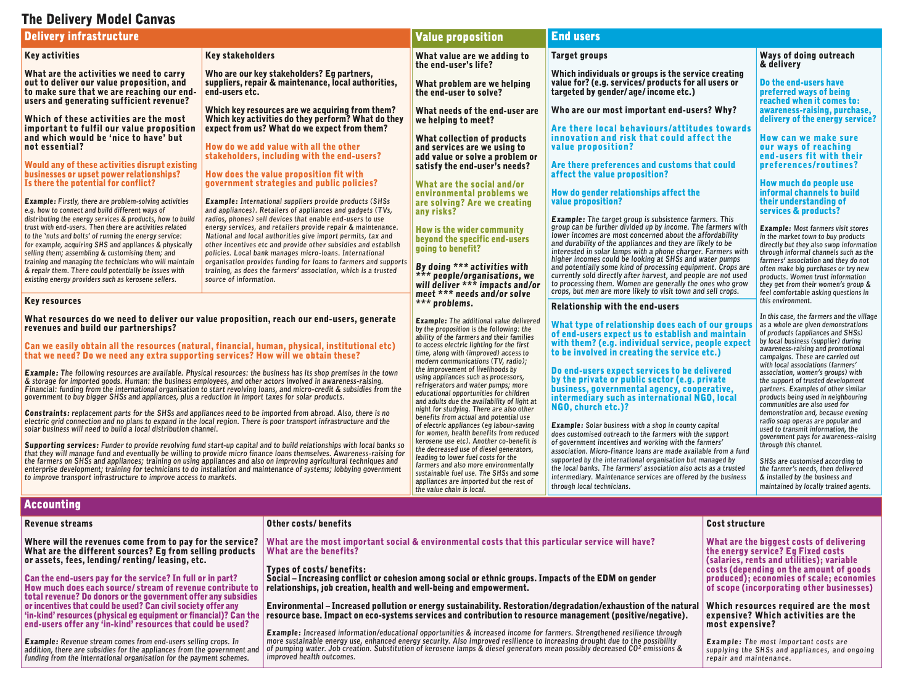How does EDM work?
EDM’s inclusive and iterative approach works with stakeholders across sectors to build a shared understanding of what impact the solution will – and will not – deliver. Also who will benefit, what it will cost and who will pay for the costs. This builds social ownership and buy-in. The process also identifies financial, social and environmental risks, and develops mitigation strategies. The end result is financially, socially and environmentally sustainable solutions.
What tools does EDM use?
People’s development needs differ depending on who they are and where they live.
EDM starts by understanding what are the priorities of the group being targeted by the project developer – for instance, a local government wanting to increase energy access or a business wanting to sell a particular product – and their local context. This includes understanding that marginalised groups (due to gender, age, disability, ethnicity etc.) may have different priorities and challenges.
Through a systematic, six step process (see below), the target end users and other stakeholders prioritise their development needs and identify the gaps or barriers preventing them being met. These gaps can involve energy (farmers may lack access to power and irrigation systems) but also other, non-energy factors (farmers may have high input costs, lack of affordable finance or few market opportunities).
EDM then works with end users and other stakeholders to develop holistic, fully costed solutions.
EDM uses recognised tools, for instance in Step 1 for stakeholder and power mapping and in Step 2 to collect and analyse baseline data. This includes household surveys, key informant interviews (KIIs), and focus group discussions (FGDs). Problem tree analysis is is used in Step 3 during needs assessment workshops, followed by further research and analysis for solutions development. This includes value chain analysis, market mapping, GIS mapping, and energy modelling to develop detailed business and financing models.
EDM pays particular attention to thinking through the socio-cultural factors (practices, norms, and beliefs) that can be critical success or failure factors in implementing projects.
EDM also uses its own innovative tool called the Delivery Model Canvas to support solutions development (see below). Adapted from Osterwalder’s Business Canvas, the Delivery Model Canvas helps end users and other stakeholders to think through solutions systematically, using categories such as delivery infrastructure (the key activities, outputs, resources and partners/stakeholders involved); the end users (including how they will be involved and their expectations); and accounting (costs and revenue streams but also social and environmental costs and benefits).


